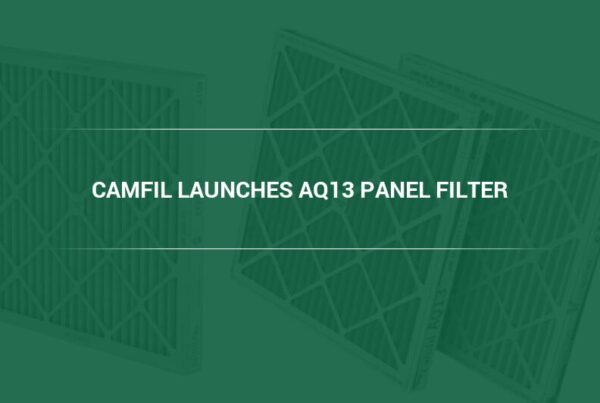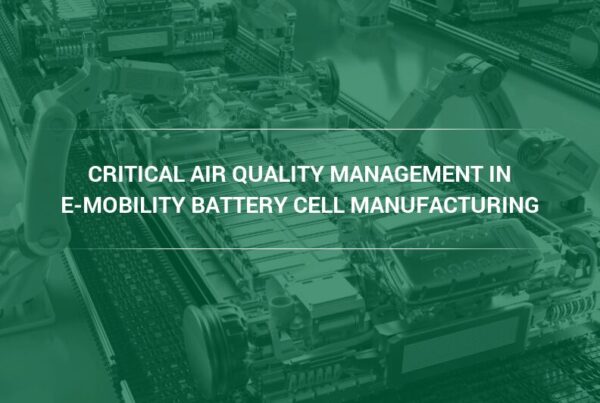Leading Air Filtration Experts from Camfil Clean Air Provide Air Filtration Glossary to Clarify Dozens of Terms
Air filtration and breathing clean air has always been essential for protecting public health, but it’s not until the COVID-19 pandemic, in which airborne transmission played a major part, that indoor air quality received major public attention.
You may have heard terms like “MERV-13” or “aerosols” or “air purifier” in the news recently as various jurisdictions and organizations make recommendations for air quality in facilities planning to reopen to the public. The mystery surrounding these terms can cause confusion and difficulty in the process of upgrading and replacing commercial building air filters and in some cases, entire systems.
Air Filtration and Indoor Air Quality Glossary
Below is a list of terms and definitions related to air filtration and indoor air quality provided by experts at Camfil, a world leader in air filtration research and engineering.
Air Filtration and Ventilation Basics Terms
Absorption – when a substance assimilates into another such as in cream into coffee or sugar into water.
Adsorption – when molecules, atoms, or ions gather on the surface of molecular filtration media.
Air handling unit (AHU) – a piece of equipment which uses a fan to circulate air throughout a building, also referred to as an air handler.
ASHRAE (American Society of Heating, Refrigeration and Airconditioning Engineers)- is a professional association for experts in the HVAC, air filtration, and related industries with over 57,000 members in 132 countries. Although ASHRAE was founded in the United States, it is a global organization with the mission of advancing research on energy efficiency, indoor air quality, and sustainable development, as well as publishing technical standards in those areas.
Filter media – the part of the air filter, typically a non-woven fabric, that separates and holds the contaminants as air passes through the filter.
HVAC – an acronym for heating, ventilation, and air conditioning. A building (or vehicle’s) HVAC system regulates variables such as temperature and humidity within a specific environment as determined by its inhabitants.
Pollution and Air Quality Terms
Aerosol – fine particulate suspended in the air generally less than 5 micron in size. Infected aerosols from human respiration have been shown to be a transmission route of COVID-19, because they can be inhaled by uninfected individuals.
Allergen – an allergen is a substance that is harmless to most people, but causes the immune systems of some individuals to produce an extreme reaction. Allergens in the air can include dust mites, pollen, plant matter, pet fur and dander.
Contaminant – any unwanted substance in the air that affects air quality.
Gaseous contaminants – also known as molecular contaminants, these contaminants include VOCs and any unwanted gases in the air that impact air quality.
Particulate matter – often abbreviated to PM1, PM2.5 or PM10, these microscopic particles suspended in the air are known to cause damage to human health as well as industrial equipment and processes. Particulate matter can be made out of anything.
Respiratory droplets – similar to aerosols except generally classified as larger than 5 microns.Respiratory droplets are droplets of moisture expelled from your lungs when you talk, breathe, cough, and sneeze. Due to their larger size, respiratory droplets do not remain suspended in the air for as long as aerosols, and therefore settle on nearby surfaces within a shorter period of time.
VOCs – volatile organic compounds are gaseous, carbon-containing compounds that easily vaporize at room temperature (in other words, they are highly volatile). Examples of VOCs include formaldehyde (CH20), acetone (C3H60), and ethanol (C2H6OH).
Air Filter Type and Filter Efficiency Terms
Activated carbon filter – a filter that uses carbon or charcoal treated to increase adsorption as its filter media. Activated carbon filters are used for gaseous (or molecular) contaminants.
Air purifier – a standalone device that operates separately from a building’s HVAC system to remove contaminants from the air. This may also be called an air cleaner.
HEPA filter – stands for high efficiency particulate air filter. In the United States, a HEPA filter must remove 99.97% of particles with a diameter of 0.3 microns. However, many products on the market falsely claim to provide HEPA filtration. Look out for terms such as True HEPA or Absolute HEPA filters, and use the guidance of an air filtration and ventilation expert, who will be able to help you purchase filters from reputable manufacturers.
MERV – a filter’s Minimum Efficiency Reporting Value is assigned by ASHRAE after rigorous testing that indicates how effective it is at filtering out particles in several size ranges. MERV values range from MERV-1 to MERV-16, with higher numbers indicating a more efficient filter.
MERV-A – when ASHRAE assigns a MERV-A value to an air filter, this means it has undergone additional steps in testing to indicate that it will maintain its rated efficiency throughout its lifespan. Many air filters use an electrostatic charge to increase particle capture, but when this charge dissipates, the filter can no longer capture particles as effectively. In other words, a MERV-13A filter will stay a MERV-13A filter for its entire service life, whereas a MERV-13 filter is likely to lose efficiency within a short period of time and perform only as effectively as a MERV-8 or MERV-9 filter for the rest of its lifespan.
Panel filter – air filters (generally produced from pleated media) designed to protect parts of an HVAC system or as a pre-filter to extend the life of a secondary filter in a multi-stage air filtration system.
About Camfil Clean Air Solutions
For more than half a century, Camfil has been helping people breathe cleaner air. As a leading manufacturer of premium clean air solutions, we provide commercial and industrial systems for air filtration and air pollution control that improve worker and equipment productivity, minimize energy use, and benefit human health and the environment. We firmly believe that the best solutions for our customers are the best solutions for our planet, too. That’s why every step of the way – from design to delivery and across the product life cycle – we consider the impact of what we do on people and on the world around us. Through a fresh approach to problem-solving, innovative design, precise process control, and a strong customer focus we aim to conserve more, use less and find better ways – so we can all breathe easier.
The Camfil Group is headquartered in Stockholm, Sweden, and has 33 manufacturing sites, six R&D centers, local sales offices in 30 countries, and about 4,800 employees and growing. We proudly serve and support customers in a wide variety of industries and in communities across the world. To discover how Camfil USA can help you to protect people, processes and the environment, visit us at www.camfil.us/
##
Media Contact:
Lynne Laake
Camfil USA Air Filters
T: 888.599.6620
E: Lynne.Laake@camfil.com
F: Friend Camfil USA on Facebook
T: Follow Camfil USA on Twitter
Y: Watch Camfil Videos on YouTube
L: Follow our LinkedIn Page



